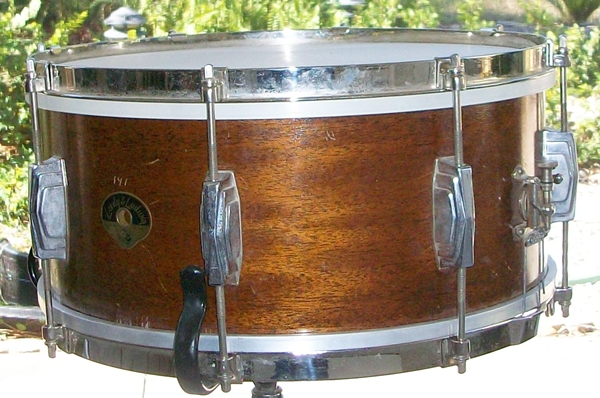I will, however, discuss my favorite two snare drums and why they are best for me, but I will also give some caveats. The first caveat is my playing style and the types of music I play may be vastly different from yours. Also, even my favorites can sound like dogs in certain rooms, and, finally, I do not record or mic my drums - all of which allows me to proclaim what I consider to be my best snare drums.
First up is my 6.5x14 Leedy & Ludwig

I play brushes a lot, and I also play music that requires shuffle beats. The Leedy & Ludwig seems to have the mojo to make both brush playing and shuffles sound magical. Since I typically play with musicians who use small amps and tend to not play overwhelmingly loud, the snare drum is a perfect fit. Because it has single flanged hoops (see Band, Single and Double Flange Hoops Explained for an explanation) I get an open sound that would drive any sound engineer nuts in a studio. It would probably not work well in venues like churches with complex acoustics either - or at least not without different heads and other tricks. The bottom line here is I have a best snare drum, for me, that may or may not be best for you. In fact, it may not even be best for me if I were in a room where the drum's resonance would overpower other parts of my kit or, worse, other musicians.
Although I prefer wood snare drums, I am fond of my 1966 5x14 Ludwig Supersensitive.

It is crisp, sensitive to the edges, and is articulate at any level from PPP to FFF. If I had to play in a room with wild acoustics that is the drum I'd bring.
Many drummers are frightened off by the seemingly complex snare mechanism on the Supersensitive models, but they are relatively easy to dial in a snare sound for any room or playing situation, and are versatile enough to fit any music style with minor adjustments. If I were to ever go into a studio to record this is the snare drum I would use.
The bottom line is just about any snare drum will work well with
- Heads that match the playing situation - double ply heads, for example are going to have a lower fundamental than single ply; pinstripe type heads are going to attenuate ring and resonance, etc.
- Snare wires matched to your snare bed - if you have narrow and/or deep snare beds on your snare drum snare wires with 16 or less strands are going to work a lot better than 20+ strand snare wires
- Tuning - I strongly recommend reading Prof.Sound's Drum Tuning Bible to find your sound
No comments:
Post a Comment